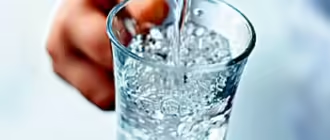The benefits of green tea. The composition of green tea includes the following components:
Tannins are a group of simple and complex phenols, polyphenols and flavonoid compounds. Vegetable tannins are relatively resistant to digestion and fermentation. They all work as astringents, causing the fibers of the skin and mucous membranes to shrink and the structural proteins to shrink. What’s useful? A cup of green tea after meals can improve digestion. Green tea has been used as a digestive aid in Asia for thousands of years.
Catechins are one of the categories of polyphenols. In green tea, catechins are present in significant quantities, more precisely, they are epicatechin (EC), epigalocatechin (EGC), epicatechin gallate (ECG) and epigallocatechin gallate (EGCG). The latter makes up about 10-15% of the catechin pool and is the most potent of them all. Its antioxidant activity is approximately 25-100 times greater than that of vitamins C and E. A cup of green tea provides about 10-40 mg of polyphenols and provides greater antioxidant benefits than a serving of broccoli, spinach, carrots and strawberries. What’s useful? A good dose of antioxidants in the system after a hard workout is what is needed to stop the damage caused to the system by free radicals.
Flavonoids are plant pigments and brightly colored chemicals found in most fresh vegetables and fruits. They can strengthen the body’s defenses against infection, and their deficiency can make bruising easier. What’s useful? It is clear that training will not go better if you are unhealthy.
Theanine is an amino acid that has a tranquilizing effect on the brain. Theanine is very different from the antioxidant catechins and polyphenols for which green tea is primarily consumed. What’s useful? I personally experience a very peaceful feeling from a couple of cups of green tea. Green tea gives you peace without reducing your motivation and mental alertness.
Bodybuilding and Fitness
Scientists say drinking green tea can raise your metabolic rate by 3%. To do this, you only need to drink three cups a day. Wondering why you rarely see fat Asians? This is not Kung Fu at all. It’s green tea!
A little about tea
Green tea can be a complete tool in any fitness enthusiast’s arsenal. That’s why lately we keep hearing about the latest bombshell in the supplement industry: green tea. However, no additive can compare with the natural product. The history of green tea consumption in Asia goes back thousands of years, so why should you deny yourself a product with such a solid reputation?







